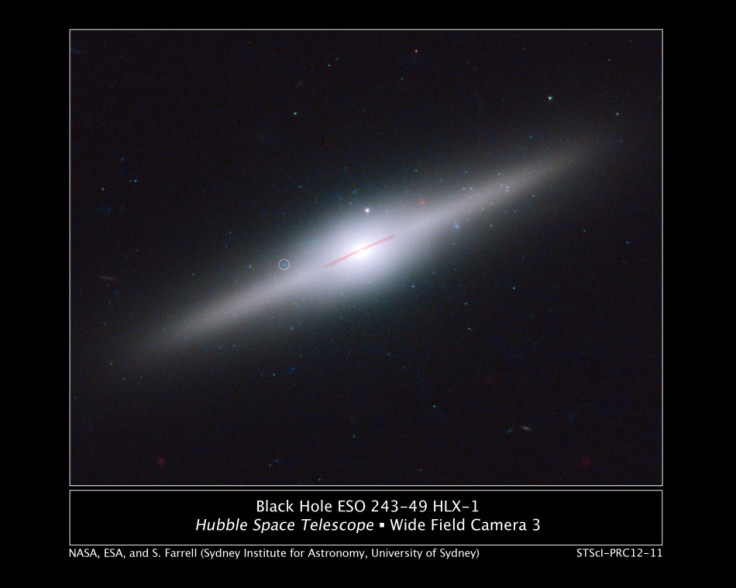Intermediate-Mass Black Hole Shreds Galaxy as it Forms

Astronomers announced Wednesday that a controversial midsized black hole matures by shredding apart a surrounding galaxy, a first glimpse into how the medium-sized black hole forms.
The rare transition captured with NASA's Hubble space telescope gave astronomers a glimpse at a black hole encircled and fed by a cluster of young blue stars from a now-disintegrated galaxy 290 million light years away.
Black holes are super-dense regions in the universe and come in three sizes: stellar black holes that have a similar mass to the Sun; supermassive black holes that have the equivalent mass of 4 million Suns and lastly, an intermediate black hole that weighs the same as 20,000 Suns discovered in 2009.
For the first time, we have evidence on the environment, and thus the origin, of this middle-weight black hole, Mathieu Servillat, postdoctoral fellow at the Harvard-Smithsonian Center for Astrophysics, said in a statement.
The black hole named HLX-1 stands for Hyper-Luminous X-ray source 1 and made a splash in 2009 after a research group led by Sean Farrell, of the Sydney Institute for Astronomy in Australia, confirmed the existence of the intermediate black hole. Intermediate black holes were theoretical prior to 2009.
Astronomers already know that massive stars collapse to form stellar-sized black holes, but little is understood how supermassive black holes form. Researchers hope insights into the intermediate black hole will fill in the gap.
HLX-1 is the target of much research, in part because of its singularity, but also because astrophysicists fear that the intermediate black hole may only give a brief glimpse before it transitions to a supermassive black hole.
This black hole is unique in that it's the only intermediate-mass black hole we've found so far. Its rarity suggests that these black holes are only visible for a short time, Servillat said in a statement.
© Copyright IBTimes 2024. All rights reserved.





















